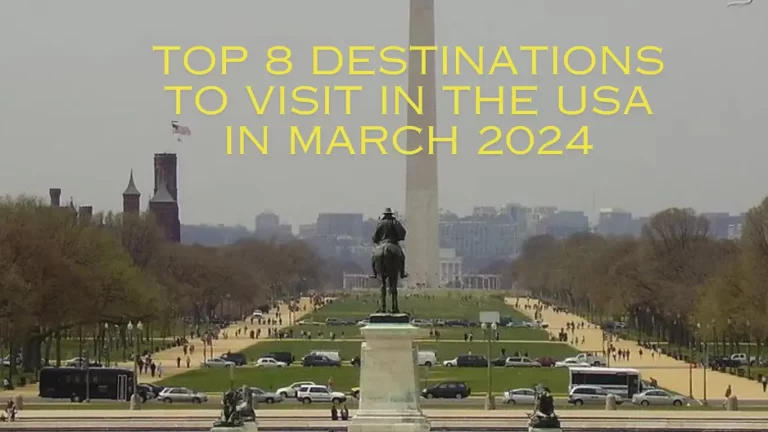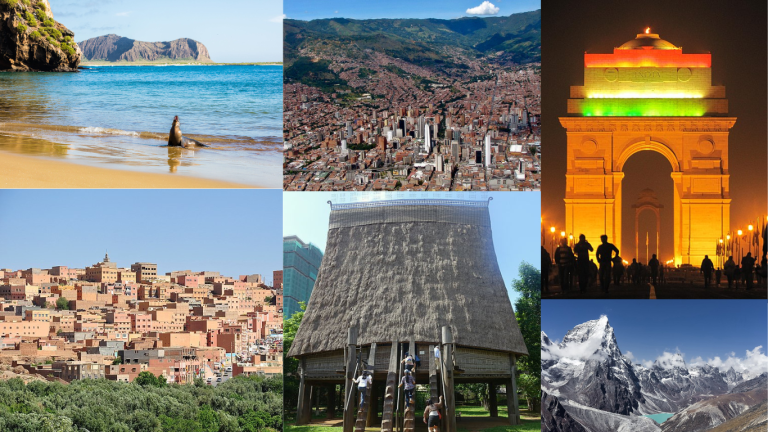Warsaw, the capital city of Poland, is a vibrant metropolis steeped in rich history, resilient spirit, and modern innovation. Situated along the banks of the Vistula River in central Poland, Warsaw serves as the political, cultural, and economic heart of the country. With a tumultuous past marked by wars and reconstructions, the city has emerged as a symbol of resilience, blending its historic charm with contemporary developments. From its captivating Old Town, meticulously reconstructed after World War II, to its thriving arts scene, Warsaw offers visitors a compelling blend of tradition and modernity. With its dynamic neighborhoods, diverse culinary scene, and lively cultural events, Warsaw invites exploration and promises to leave a lasting impression on every visitor.
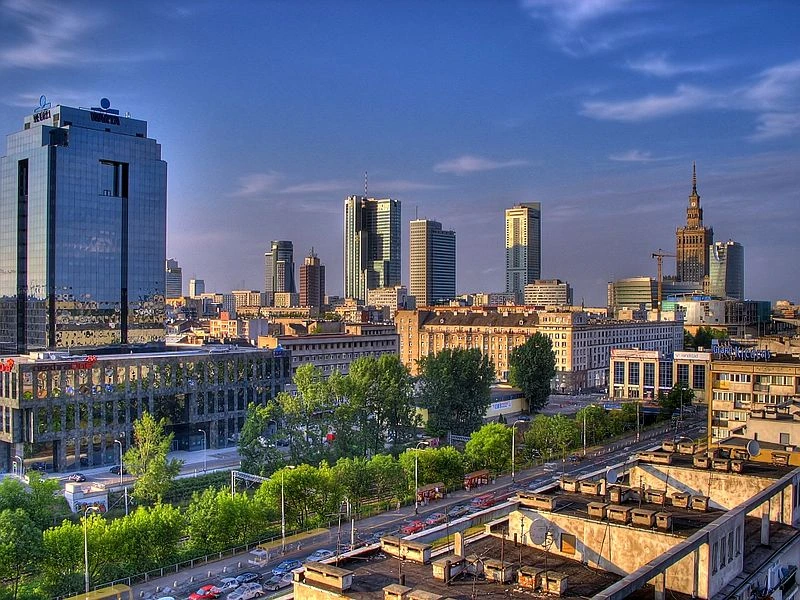
3 Day Warsaw Itinerary
# Day 1 – Exploring Warsaw’s Historical Treasures
If you’re looking for a city that combines history, culture and nature, Warsaw is the perfect destination for you. In this blog post, we’ll show you how to spend a day in Poland’s capital, exploring its historical treasures and enjoying its modern amenities.
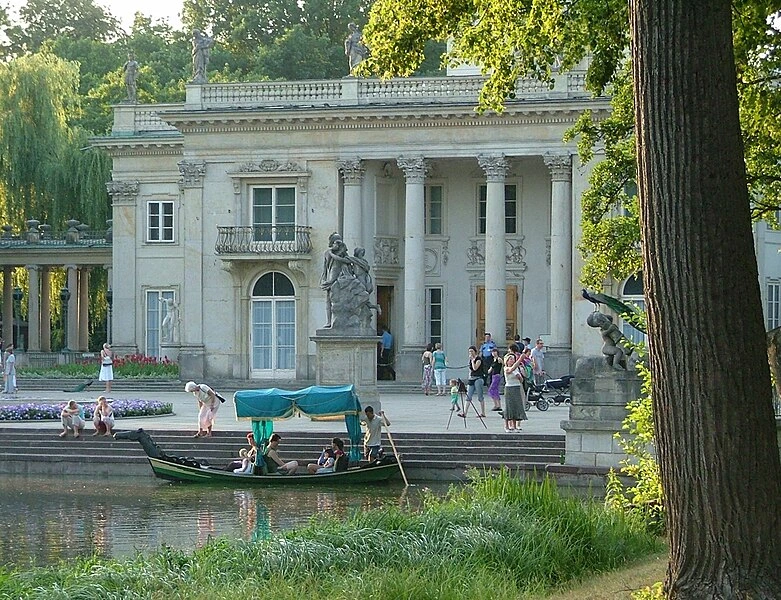
Morning
Start the day with a traditional Polish breakfast, consisting of bread, cheese, ham, eggs, sausages, pickles and jam. You can find many cafes and bakeries in the city center that offer this hearty meal.
Next, head to the iconic Warsaw Old Town, a UNESCO World Heritage Site that was rebuilt after World War II. Here, you can admire the colorful buildings, the medieval walls and the impressive monuments. Don’t miss the Royal Castle, the former residence of Polish kings and the seat of parliament. You can take a guided tour of the castle and see its richly decorated rooms, paintings and furniture.
Another highlight of the Old Town is the Market Square, a lively place where you can find street performers, souvenir shops and cafes. Here, you can also visit St. John’s Archcathedral, the oldest church in Warsaw and the burial place of many Polish nobles.
Afternoon
After exploring the Old Town, it’s time for lunch. You can choose from a variety of family-friendly restaurants in the area, serving Polish and international cuisine. Some of the dishes you should try are pierogi (dumplings), bigos (stew), żurek (sour rye soup) and gołąbki (cabbage rolls).
After lunch, head to Łazienki Park, the largest and most beautiful park in Warsaw. Here, you can discover the Łazienki Palace, also known as the Palace on the Isle, a stunning example of neoclassical architecture. The palace was once the summer residence of King Stanisław August Poniatowski and now houses a museum of royal portraits and paintings.
You can also enjoy a relaxing boat ride on the lake that surrounds the palace and admire the views of the park. Don’t forget to visit the Chopin Monument, a bronze statue of Poland’s most famous composer. If you’re lucky, you might catch a free piano concert that takes place near the monument every Sunday from May to September.
Evening
After a day full of sightseeing, it’s time for dinner. You can find many local Polish restaurants in the city center that offer authentic and delicious food. Some of the dishes you should try are kotlet schabowy (breaded pork cutlet), barszcz (beetroot soup), placki ziemniaczane (potato pancakes) and sernik (cheesecake).
If you’re feeling adventurous, you can also opt for a cultural show or performance in one of Warsaw’s theaters or concert halls. You can choose from a variety of genres, such as opera, ballet, musicals or comedy. Some of the venues you can check out are Teatr Wielki (the National Opera), Teatr Narodowy (the National Theater) or Sala Kongresowa (the Congress Hall).
We hope you enjoyed this blog post and found some inspiration for your trip to Warsaw. Stay tuned for more posts about our adventures in Poland!
# Day 2 – Immersing in Warsaw’s Cultural Scene
If you’re looking for a day full of culture, education and fun, Warsaw has plenty to offer. On your second day in the Polish capital, you can explore some of the city’s most fascinating museums, enjoy interactive exhibits and shows, and discover the vibrant nightlife of one of Europe’s most dynamic cities.

Morning: Enjoy breakfast at a cozy café and explore the Warsaw Uprising Museum
Start your day with a delicious breakfast at one of the many cozy cafés in the city center. You can choose from traditional Polish dishes like scrambled eggs with kielbasa sausage, or go for something more international like pancakes, croissants or bagels. You’ll need some energy for your next stop: the Warsaw Uprising Museum.
The Warsaw Uprising Museum is one of the most important and impressive museums in Poland. It tells the story of the heroic resistance of the Polish people against the Nazi occupation during World War II. The museum features hundreds of artifacts, photos, videos and testimonies that recreate the atmosphere and events of the 63-day uprising that took place in 1944. You’ll learn about the courage and sacrifice of the fighters, the civilians and the children who participated in this epic struggle for freedom.
The museum is also very interactive and engaging for kids. They can see how the insurgents communicated through secret radio stations, how they built makeshift weapons and explosives, and how they used the city’s sewer system to move around. They can also experience what it was like to fly over Warsaw in a bomber plane or parachute into the city as a member of the Home Army.
The museum is open from 10 a.m. to 6 p.m. on weekdays, and from 10 a.m. to 8 p.m. on weekends. The admission fee is 25 PLN (about $6) for adults, and 20 PLN (about $5) for students and seniors. Children under 7 enter for free.
Afternoon: Lunch at a nearby eatery and visit the Copernicus Science Centre
After exploring the Warsaw Uprising Museum, you might be hungry for some lunch. Luckily, there are plenty of eateries nearby that cater to different tastes and budgets. You can find everything from pizza, burgers and kebabs to sushi, salads and soups. Or you can try some local specialties like pierogi (dumplings), bigos (cabbage stew) or żurek (sour rye soup).
Once you’ve satisfied your appetite, it’s time to head to the Copernicus Science Centre, one of the largest and most modern science museums in Europe. The Copernicus Science Centre is a paradise for curious minds of all ages. It features over 450 interactive exhibits that cover various topics such as physics, chemistry, biology, astronomy, ecology and more. You can experiment with light, sound, electricity, magnetism, gravity and other phenomena. You can also explore the human body, the brain, the senses and emotions.
One of the highlights of the Copernicus Science Centre is the planetarium, where you can watch spectacular shows that take you on a journey through space and time. You can see the stars and planets as they appear in different seasons and locations, learn about the history and myths of constellations, or witness the birth and death of stars. The planetarium shows are available in English and Polish, and they last about 45 minutes each.
The Copernicus Science Centre is open from 9 a.m. to 6 p.m. on weekdays, and from 10 a.m. to 7 p.m. on weekends. The admission fee is 32 PLN (about $8) for adults, and 27 PLN (about $7) for students and seniors. Children under 3 enter for free. The planetarium shows have an additional fee of 18 PLN (about $5) for adults, and 15 PLN (about $4) for students and seniors.
Evening: Dinner at a family-friendly restaurant and explore Nowy Świat Street for shopping and evening strolls
After a day full of learning and fun, you might want to relax and enjoy a nice dinner with your family. Warsaw has plenty of restaurants that offer a variety of cuisines and atmospheres. You can find traditional Polish food like kotlet schabowy (breaded pork cutlet), gołąbki (cabbage rolls) or placki ziemniaczane (potato pancakes). You can also try some international dishes like Italian pasta, Indian curry or Thai noodles.
If you’re looking for a family-friendly restaurant that has something for everyone, you might want to check out Zapiecek Polskie Pierogarnie. This chain of restaurants specializes in pierogi (dumplings), which are one of Poland’s most popular dishes. You can choose from dozens of flavors and fillings, such as cheese, meat, mushrooms, spinach, fruits and more. You can also order other Polish dishes like soups, salads and desserts. The restaurants are cozy and decorated with folk motifs, and they have a special menu and play area for kids.
Zapiecek Polskie Pierogarnie has several locations in Warsaw, but one of the most convenient ones is on Nowy Świat Street, which is also one of the best places to enjoy the evening in Warsaw. Nowy Świat Street is a lively and elegant boulevard that connects the Old Town with the city center. It’s lined with shops, cafés, bars and restaurants that cater to different tastes and budgets. You can find everything from souvenirs, books and clothes to jewelry, art and antiques. You can also enjoy some live music, street performers and festive lights.
Nowy Świat Street is a great place to take a stroll, do some shopping or just soak up the atmosphere of Warsaw at night. It’s also a safe and pedestrian-friendly area that has plenty of public transportation options nearby. You can easily get to your hotel or other attractions by bus, tram or metro.
We hope you enjoyed your second day in Warsaw and that you’re ready for more adventures tomorrow. Stay tuned for our next blog post, where we’ll show you how to spend your third day in Warsaw exploring the city’s green spaces and outdoor activities.
# Day 3 – Delving into Warsaw’s Modern Delights
On our third day in Warsaw, we explored some of the city’s most fascinating attractions that showcase its modern spirit and cultural diversity. From a museum that tells the story of Polish Jews to a zoo that offers a glimpse into the animal kingdom, we had a day full of learning and fun.
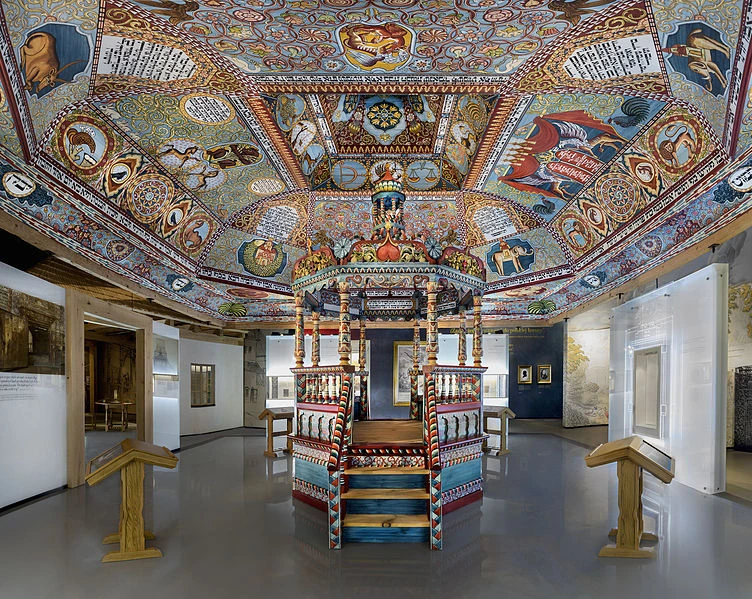
Morning
We started our day with a delicious breakfast at a trendy café near our hotel. We enjoyed some fresh pastries, coffee, and juice while admiring the urban scenery. Then, we headed to the POLIN Museum of the History of Polish Jews, which is located in the former Jewish ghetto.
The museum is a stunning example of contemporary architecture, with a glass façade that reflects the surrounding buildings. Inside, we were amazed by the interactive exhibits that span over 1,000 years of Jewish history in Poland. We learned about the origins of Jewish settlement, the golden age of Polish Jewry, the Holocaust, and the revival of Jewish culture in Poland today. The museum also features art, music, and personal stories that bring the history to life. We especially liked the multimedia gallery that recreates the atmosphere of pre-war Jewish towns.
The museum is suitable for visitors of all ages and backgrounds, and offers guided tours, workshops, and events. We spent about two hours there, but we could have easily stayed longer.
Afternoon
After the museum, we were ready for some lunch. We walked to a nearby restaurant that serves authentic Polish cuisine. We ordered some pierogi (dumplings), bigos (stew), and żurek (sour rye soup). The food was hearty and flavorful, and we enjoyed trying some dishes that we had never had before.
Next, we took a bus to the Warsaw Zoo, which is one of the largest and oldest zoos in Europe. The zoo covers 40 hectares and houses over 4,000 animals from around the world. We saw lions, tigers, elephants, giraffes, penguins, and many more. We also learned about the zoo’s conservation efforts and breeding programs.
One of the highlights of the zoo was the Primate House, where we watched gorillas, orangutans, chimpanzees, and lemurs interact with each other and their environment. The zoo also offers educational programs for children and adults, such as animal feeding sessions, workshops, and lectures.
We had a great time at the zoo, and we were impressed by how well-maintained and spacious it was.
Evening
For our farewell dinner, we decided to treat ourselves to a traditional Polish restaurant in the Old Town. We chose a cozy place with wooden tables and folk music. We ordered some more pierogi (we couldn’t get enough of them), kotlet schabowy (breaded pork cutlet), gołąbki (cabbage rolls), and sernik (cheesecake). The food was delicious and filling, and we toasted to our wonderful trip with some local beer.
After dinner, we took an optional evening walk along the Vistula River, which runs through the city. We enjoyed the views of the illuminated bridges, monuments, and buildings. We also saw some people kayaking, biking, or relaxing on the riverbank. It was a beautiful way to end our day and our trip.
We hope you enjoyed reading about our adventures in Warsaw. If you are looking for a destination that combines history, culture, nature, and fun, Warsaw is a great choice. We can’t wait to come back and discover more of this amazing city.
Frequently Asked Questions
What are the must-visit attractions in Warsaw for a 3-day itinerary?
Explore iconic landmarks like the Warsaw Old Town, Łazienki Park, and the Warsaw Uprising Museum.
Is it possible to cover all major attractions in Warsaw in just 3 days?
While it may not be possible to visit every single attraction, our curated itinerary ensures you experience the highlights of Warsaw within the timeframe.
How should I plan my transportation around Warsaw for a 3-day stay?
Warsaw has an efficient public transportation system including buses, trams, and metro lines, making it easy to navigate the city with our provided transportation tips.



